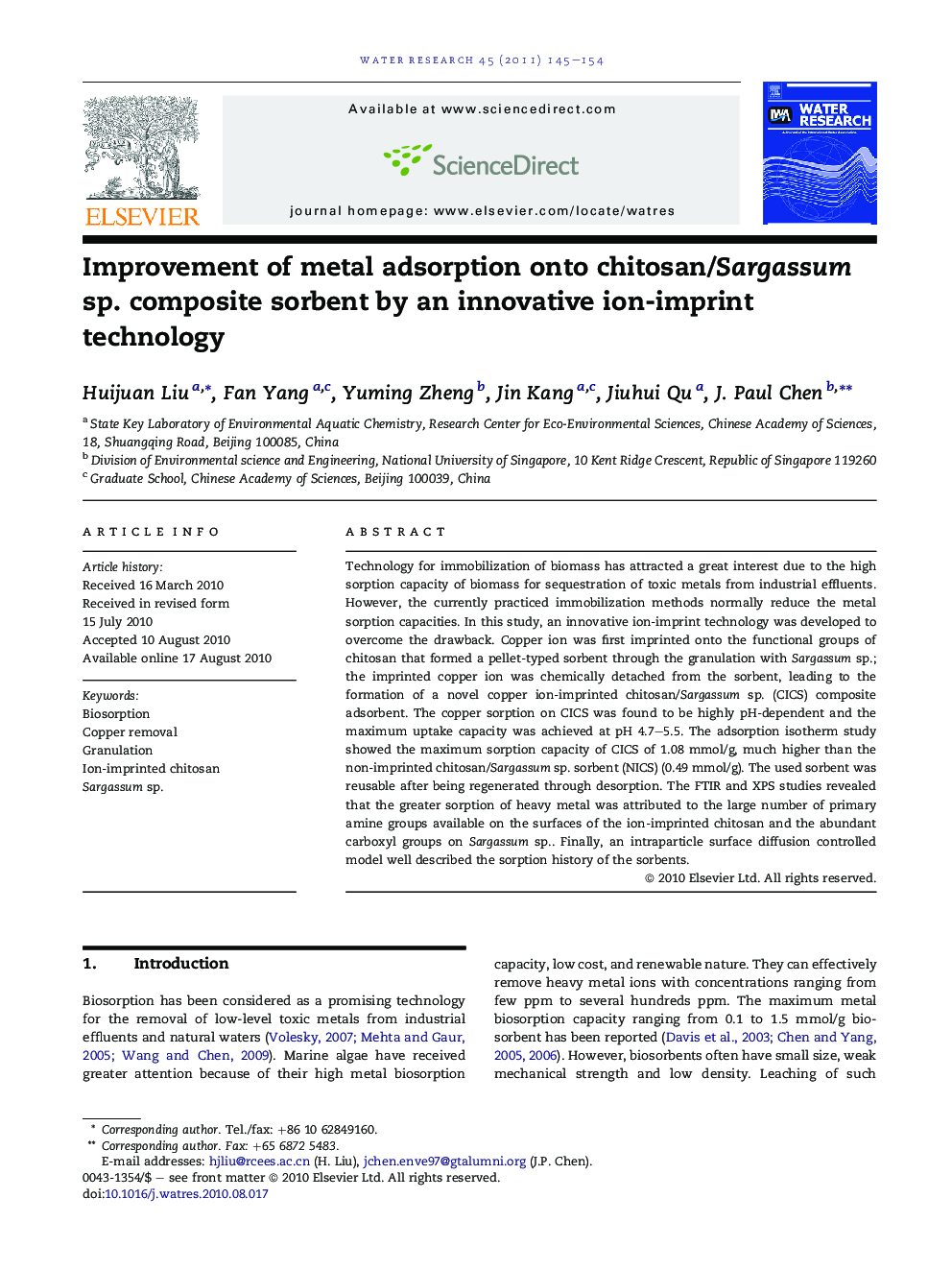| Article ID | Journal | Published Year | Pages | File Type |
|---|---|---|---|---|
| 4482077 | Water Research | 2011 | 10 Pages |
Technology for immobilization of biomass has attracted a great interest due to the high sorption capacity of biomass for sequestration of toxic metals from industrial effluents. However, the currently practiced immobilization methods normally reduce the metal sorption capacities. In this study, an innovative ion-imprint technology was developed to overcome the drawback. Copper ion was first imprinted onto the functional groups of chitosan that formed a pellet-typed sorbent through the granulation with Sargassum sp.; the imprinted copper ion was chemically detached from the sorbent, leading to the formation of a novel copper ion-imprinted chitosan/Sargassum sp. (CICS) composite adsorbent. The copper sorption on CICS was found to be highly pH-dependent and the maximum uptake capacity was achieved at pH 4.7–5.5. The adsorption isotherm study showed the maximum sorption capacity of CICS of 1.08 mmol/g, much higher than the non-imprinted chitosan/Sargassum sp. sorbent (NICS) (0.49 mmol/g). The used sorbent was reusable after being regenerated through desorption. The FTIR and XPS studies revealed that the greater sorption of heavy metal was attributed to the large number of primary amine groups available on the surfaces of the ion-imprinted chitosan and the abundant carboxyl groups on Sargassum sp. Finally, an intraparticle surface diffusion controlled model well described the sorption history of the sorbents.
